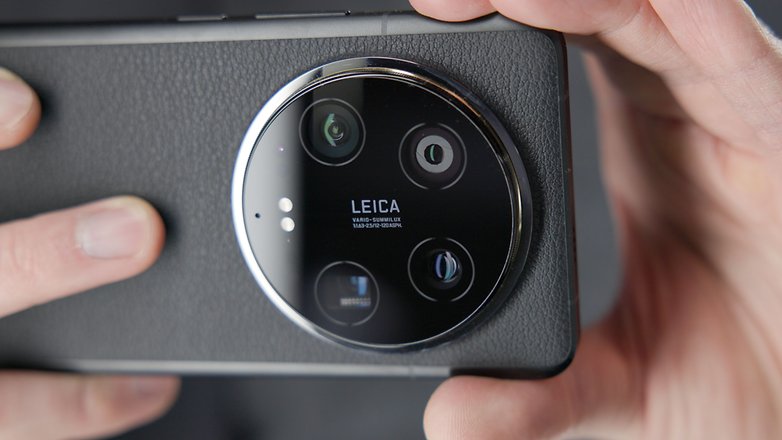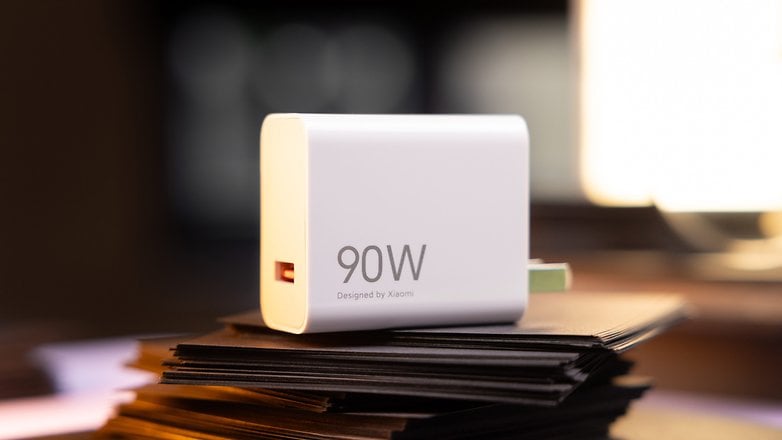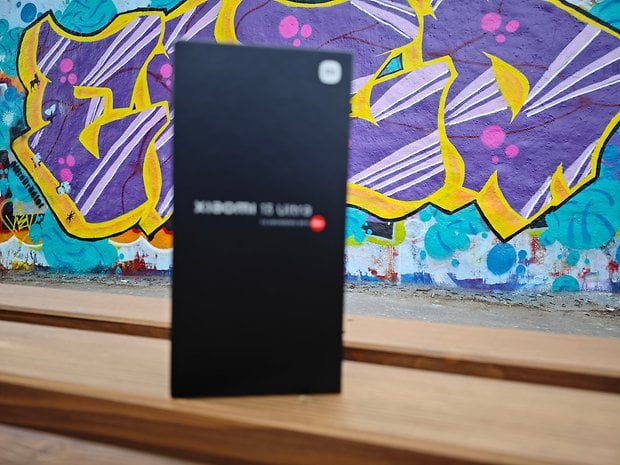Xiaomi 14 Ultra vs. Xiaomi 13 Ultra: How Much Better is the New Flagship?


Read in other languages:
The brand new Xiaomi 14 Ultra is the best that the Chinese smartphone manufacturer has to offer. The device is the successor to last year's Xiaomi 13 Ultra. But how much has actually changed and is the upgrade worth it? We compare the two premium phones Xiaomi 14 Ultra and 13 Ultra.
Xiaomi 14 Ultra vs Xiaomi 13 Ultra: Technical data in comparison
| Xiaomi's flagship 2024 | Xiaomi's flagship 2023 | |
|---|---|---|
| The product | ||
| Picture |

|

|
| Review |
|
|
| Display |
|
|
| SoC |
|
|
| RAM |
|
|
| Storage |
|
|
| OS |
|
|
| Camera |
|
|
| Selfie camera |
|
|
| Battery capacity |
|
|
| Connectivity |
|
|
| IP certification |
|
|
| Dimensions and weight |
|
|
| To the offer* |
Xiaomi 14 Ultra vs. Xiaomi 13 Ultra: Display and design
If we compare the Xiaomi 14 Ultra with the Xiaomi 13 Ultra, we notice the camera system on the back of both smartphones, which consists of a huge, circular element. This looks almost identical on both Ultras, and both use four cameras.
A look at the front reveals a curved display protected by Gorilla Glass Victus on the 2023 model - the Xiaomi 14 Ultra, on the other hand, features a flat design and Xiaomi Shield Glass. At 219.8 g and 9.2 mm, the new model is both a little thicker and a little lighter - a stunt that I unfortunately can't pull off myself.
- Also exciting: these are the best smartphones of 2024

Both models are of course IP68-certified and protected against water and dust ingress. Otherwise, there are no major visual differences.
At first glance, this also applies to the display: Both have a 6.73-inch screen diagonal, both phones offer 1440p resolution, and both also have a variable refresh rate of 1-120 Hz. However, Xiaomi has increased the peak brightness of the 14 Ultra from 2,600 to 3,000 nits.

Xiaomi 14 Ultra vs. Xiaomi 13 Ultra: SoC and performance
There was the expected update to the processor: the Snapdragon 8 Gen 2 had to make way for the Snapdragon 8 Gen 3 in the new model. This brings a performance gain, but at a level that no one should actually notice in everyday use. Expressed in figures, it looks like this:
| Xiaomi 14 Ultra Snapdragon 8 Gen 3 |
Xiaomi 13 Ultra Snapdragon 8 Gen 2 |
|
|---|---|---|
| 3DMark Wild Life Stress Test |
|
|
The 3DMark Wild Life Stress Test shows how the performance develops in continuous operation. At peak performance, the Xiaomi 14 Ultra is significantly stronger than the Xiaomi 13 Ultra. However, the smartphone has to throttle the performance at some point under full load to control the temperature - and the benchmark results in the 14 Ultra then even fall below those of the 13 Ultra. But as I said, you won't notice any of this in practice.
The Xiaomi 13 Ultra, which is not available in particularly large numbers in Europe, was originally offered in a version with 12 GB RAM and 512 GB system memory. This year, the Xiaomi 14 Ultra is also only available in one variant, with the 512 GB combined with 16 GB RAM. A small plus for the Xiaomi 14 Ultra, even though this difference is not very noticeable in everyday use.
That leaves connectivity, which is also largely identical. Only Bluetooth has been upgraded to version 5.4 for the 14 model. Or wait, there is one more thing: Although it is not in Xiaomi's datasheet, I read at least on one carrier site that the Xiaomi 14 series supports eSIM.
Xiaomi 14 Ultra vs. Xiaomi 13 Ultra: Software
The Xiaomi 14 Ultra comes with Android 14 and the new HyperOS instead of MIUI. The Xiaomi 13, on the other hand, was delivered with Android 13 based on MIUI 14. With HyperOS, Xiaomi has not yet turned the OS inside out and we also find bloatware unworthy of a flagship on both devices. However, there is one difference that could play a role in a purchase decision: Both offer you five years of security updates, but where Xiaomi promises four major Android updates on the Xiaomi 14 Ultra, the Xiaomi 13 Ultra only has three.
This means that if you buy both models today, you could use the Xiaomi 14 Ultra for two years longer. In any case, it's nice to see that Xiaomi is improving its software promises step by step.
Xiaomi 14 Ultra vs. Xiaomi 13 Ultra: Camera

Well, the camera is not only the flagship of both models, but also the most exciting category if we want to determine where Xiaomi has improved the 14 Ultra compared to the already very strong camera smartphone Xiaomi 13 Ultra. If we go through the technical data neatly, we again notice an incredible number of parallels:
- 50 MP main camera with 1-inch sensor
- Variable aperture
- 50 MP ultra-wide angle
- 2x telephoto cameras (2.3x and 5x) also with 50 MP
- 32 MP selfie camera
- Leica partnership
- all images are optically stabilized, apart from the ultra-wide-angle cameras
So the camera line-up is identical for both models? Nope, of course not. The main camera, which uses the large and brand-new LYT-900 image sensor, is a completely new product series from Sony that replaces the old sensors. In addition, the Xiaomi 13 Ultra has a variable aperture from f/1.9 to f/4.0, while the new flagship has a continuously adjustable aperture from f/1.63 to f/4.0.
So yes, there are many similarities between the two arrays, but in a technical field in which we have now arrived in terms of camera quality, the differences are marginal - and so these supposedly small things can tip the scales. You can see the image quality of the Xiaomi 14 Ultra and Xiaomi 13 Ultra for yourself in the following two image galleries.
Test photos of the Xiaomi 14 Ultra
Test photos of the Xiaomi 13 Ultra
- More on the topic: These are the best camera smartphones of 2024 so far
Xiaomi 14 Ultra vs. Xiaomi 13 Ultra: Battery and fast charging
Xiaomi has mastered fast charging. Obviously, there was no real need to change fundamental things, so both models have a 5,000 mAh battery that can be pressurized with a maximum of 90 W. The only difference here is wireless charging, which is possible with 80 W instead of "only" 50 W in the Xiaomi 14 Ultra. With wireless reverse charging, the charging power is at eye level again with 10 W each.

- How great are the dangers of fast charging for your smartphone's battery?
While we complain about the lack of chargers from other manufacturers, Xiaomi remains true to itself and continues to include the charger in the box.
Xiaomi 14 Ultra vs. Xiaomi 13 Ultra: Price and availability
I already mentioned it at the beginning: The number of units of the Xiaomi 13 Ultra offered in this country was quite manageable. The number of users in Germany is probably correspondingly low and the device is just as rarely offered to you today. I have seen a few offers around 1,100 euros on Idealo, but these were mostly marketplace offers.
If we go by the RRP, both models cost exactly the same to the cent. The Xiaomi 13 Ultra is still listed at this price on the Xiaomi website, but is of course no longer available. If you can actually get a new Xiaomi 13 Ultra in its original packaging for around 1,100 euros, you can buy it without hesitation. But if they try to sell it to you for just under 1,500 stones, you'd have to be pretty stupid not to go for the Xiaomi 14 Ultra.
Xiaomi 14 Ultra vs. Xiaomi 13 Ultra: Price comparison
| Device | Memory capacity | Price (RRP) |
|---|---|---|
| Xiaomi 14 Ultra | 16 GB RAM / 512 GB | 1.499,90 Euro |
| Xiaomi 13 Ultra | 12 GB RAM / 512 GB | 1,499.00 euros |
The Xiaomi 14 Ultra, which you can easily buy from Amazon, for example, has the trump card here:
Good
- Well-calibrated screen
- Outstanding photo quality
- Good battery life and really fast recharging
- 4 Android updates + 5 years of security updates
Bad
- HyperOS lacks innovation
- Temperature control not optimized
- Availability and price

Xiaomi 14 Ultra vs. Xiaomi 13 Ultra: Conclusion
Of course, the improvements from the Xiaomi 13 Ultra to the Xiaomi 14 Ultra are manageable. But that's no shame considering the level we're at here. The battery charges wirelessly much faster, the SoC provides more performance with better efficiency, and the display is a little brighter at its peak. And yes, the camera has also become a little bit better in every nook and cranny.
- You can find even more Xiaomi phones here: These are the best Xiaomi smartphones compared
However, these are not enough reasons to switch from a Xiaomi 13 Ultra to a Xiaomi 14 Ultra. For me, as someone who would like to use a smartphone for three years or longer, the update policy also plays a role-and that clearly speaks in favor of the Xiaomi 14 Ultra.
In view of the limited availability of the 13 Ultra, the final tip is clear: buy the Xiaomi 14 Ultra if you want the best possible Xiaomi device. If you want to buy the best Android smartphone in general, your answer may also be the Xiaomi 14 Ultra - but in that case, take another look at our comparison between the Galaxy S24 Ultra and the Xiaomi 14 Ultra to be on the safe side.























































































































































